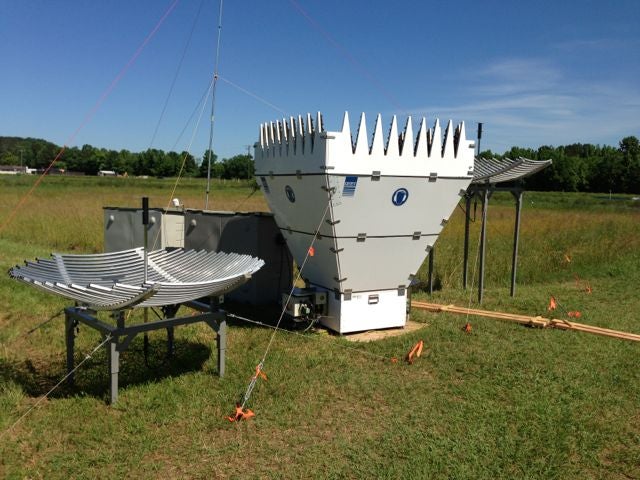Sodar-RASS Metek DSDPA.90-24

The Atmospheric Profiling Group in ISF operated a mini-Doppler Sodar-RASS as part of the Integrated Sounding System (ISS).
SODAR = SOnic Detection And Ranging
RASS = Radio Acoustic Sounding System
The Sodar transmits acoustic pulses (literally beeps) upwards and as these are reflected back down to the sodar they are Doppler shifted by the wind. It measures the Doppler shift of the reflected pulses in multiple beam directions and uses that information to calculate the 3-dimensional wind above the sodar. A low power radar is sometimes deployed with the Sodar to enable RASS measurements of virtual temperature. The radar can detect the acoustic pulses as they propagate upwards, and since the speed of sound is related to temperature, the system can determine the approximate virtual temperature aloft.
The ISS sodar is a Metek DSDPA.90-24 sodar and is equipped with a RASS add-on. This is a smaller version of the DSDPA.90-64 described in Engelbart, et al (1999). The RASS radar is a vertically pointing 915 MHz 20W CW radar.
REFERENCE:
Engelbart. D., H. Steinhagen, U. Gorsdorf, J. Neisser, H-J. Kirtzel, and G. Peters : "First Results of Measurements with a Newly Designed Phase-Array SODAR with RASS", Meteorol. Atmos. Phys., 71, p. 61-68, 1999.
Comparisons with towers, radiosondes and radar wind profilers indicate that the system is accurate to approximately 1 m/s in winds and 1C in virtual temperature, although performance varies depending on atmospheric conditions.